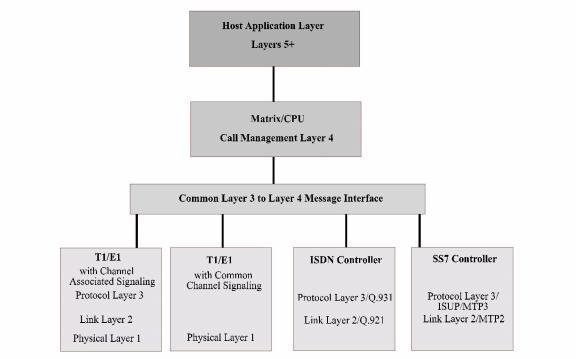
You are here: PPL Developer’s Guide > 1 PPL Introduction > Basics of PPL

Benefits of PPL and the PPL Composer
Excel’s Programmable Protocol Language (PPL) provides the ability to easily access and modify software operations on a per PPL component basis, giving the user full control over call processing. The PPL software load resides on system cards and consists of a state machine engine, default protocol state machines (*.ppl files) and atomic function/event libraries (*.exl files).
A PPL protocol is an association of a state/event table and a primitive table. The state machine engine uses the tables to drive PPL objects through various states in response to internal or external events.
You can customize protocols using the PPL Composer application, which provides a graphical representation of PPL state machines. Protocol variants can be developed easily by modifying default protocols that can be obtained from the Excel protocol library.
PPL protocols are independent of switch system software, allowing for the creation of new protocols without upgrading system software. This allows for quick changes required to manage network signaling variants. Protocols are created with high-level Atomic Functions (AF), abstracting the user from detailed implementation logic.
Multiple protocols can be defined for each PPL component and selectively assigned to each object being managed.
You should familiarize yourself with the following terms and acronyms used throughout this manual. Each is discussed in more detail within the manual.
|
AF |
Atomic Function. A state machine software routine which normally performs one independent task. |
|
*.ppl |
File extension for PPL protocol data file used by the PPL Composer application. |
|
Event |
A condition that, when met, drives a state machine from one state to another. |
|
*.exl |
File extension for files containing the atomic function/event library for a PPL component. |
|
INS |
In Service |
|
L3 |
Layer 3 (Network Signaling Protocol Layer) |
|
L3P |
Layer 3 Plus (interface between L3 and L4) |
|
L4 |
Layer 4 (Call Processing Layer) |
|
L5 |
|
|
Out of Service |
|
|
PPL |
Programmable Protocol Language. An Environment which allows for different software components within Excel’s switching platforms to be externally programmed and downloaded by the host application. |
|
A programmable software component that uses PPL state machines that can be modified with the PPL Composer. |
|
|
A system object that is controlled by a PPL state machine such as a channel, an ISDN D channel, or an SS7 link. |
|
|
Primitive |
A list of atomic functions invoked by a particular event. |
|
A list of all primitives used in a particular state machine. |
|
|
Protocol |
A state machine comprised of a state/event table and a primitive table. |
|
The current "context" of a PPL object, such as Idle, Seizing, Answered. |
|
|
State/Event Table |
A table of all states used in a state machine and their associated events/primitives. |
PPL state machines use symbols to represent states, atomic functions, and events. These correspond to standard Specification and Description Language (SDL) symbols as shown in the figure below The PPL symbol for a state that is internal is denoted with an "I" in front of the "S".
Figure 1-1 State Machine Symbols
.

Figure 1-2 Excel platform Software Architecture

